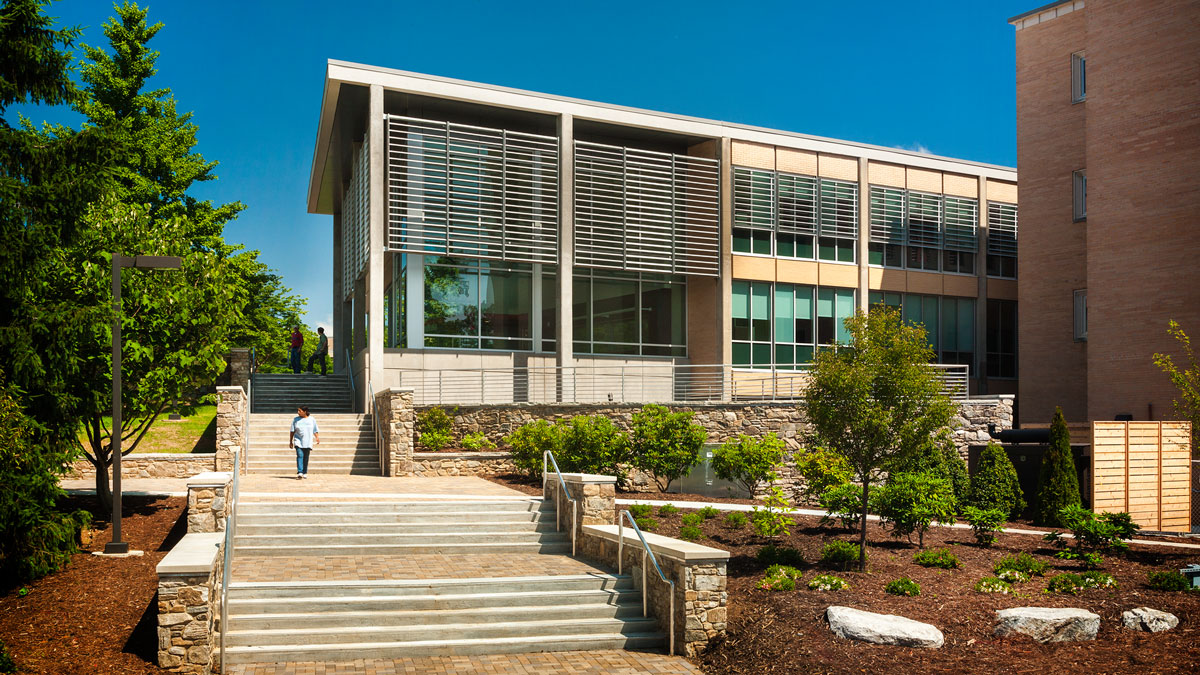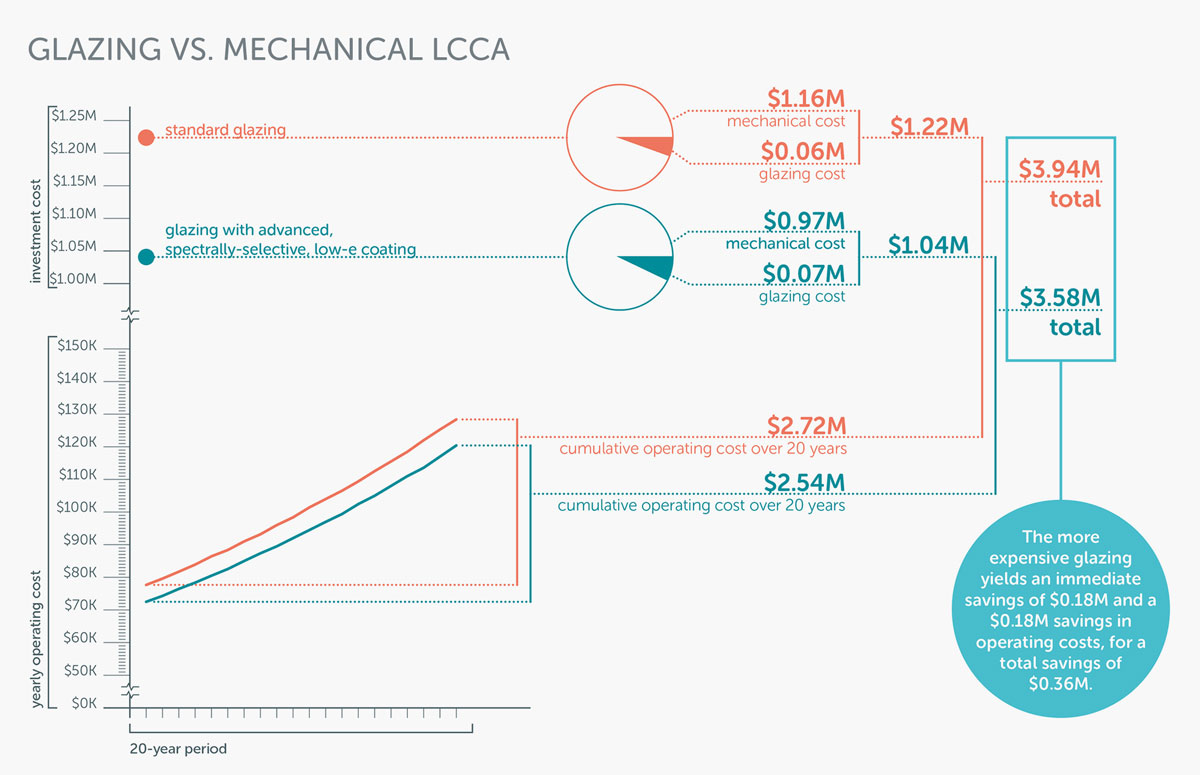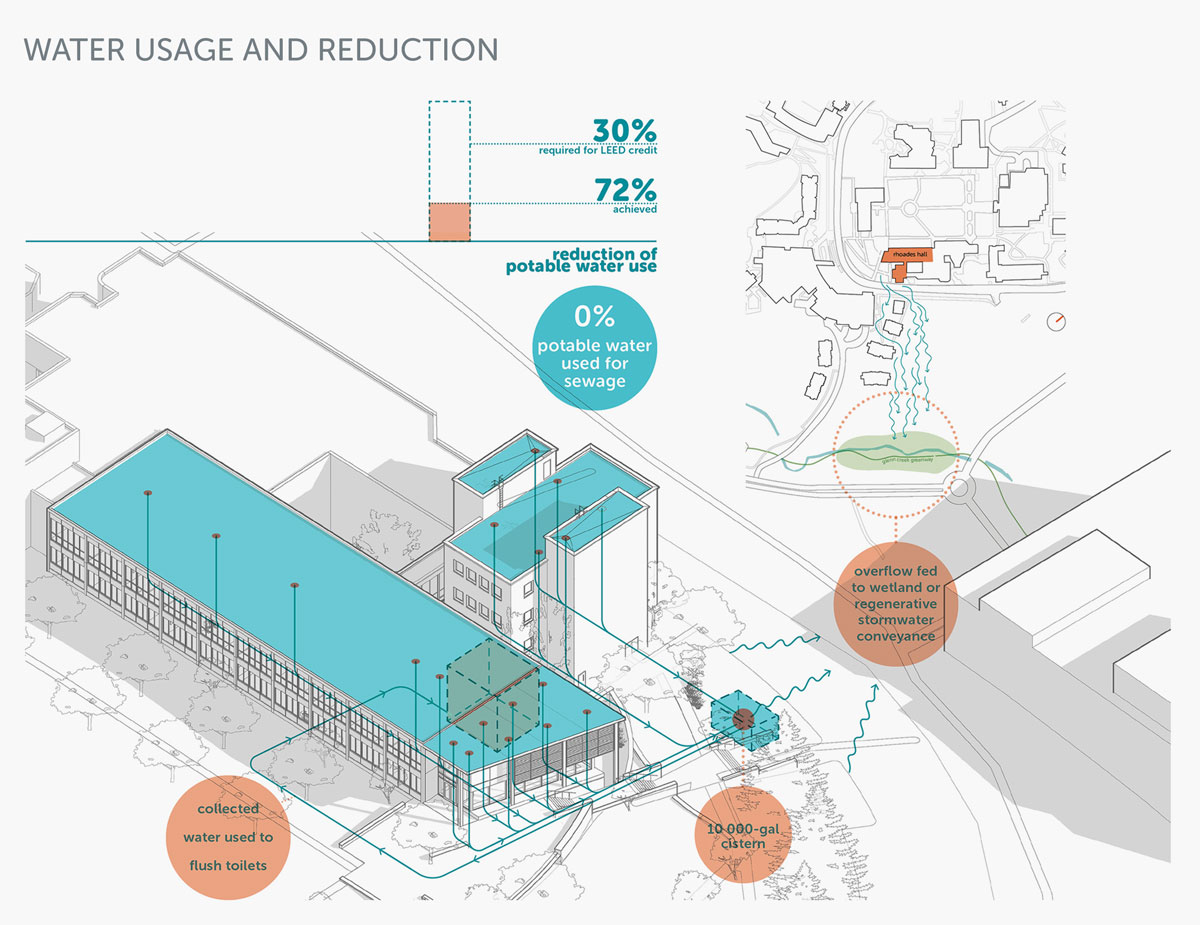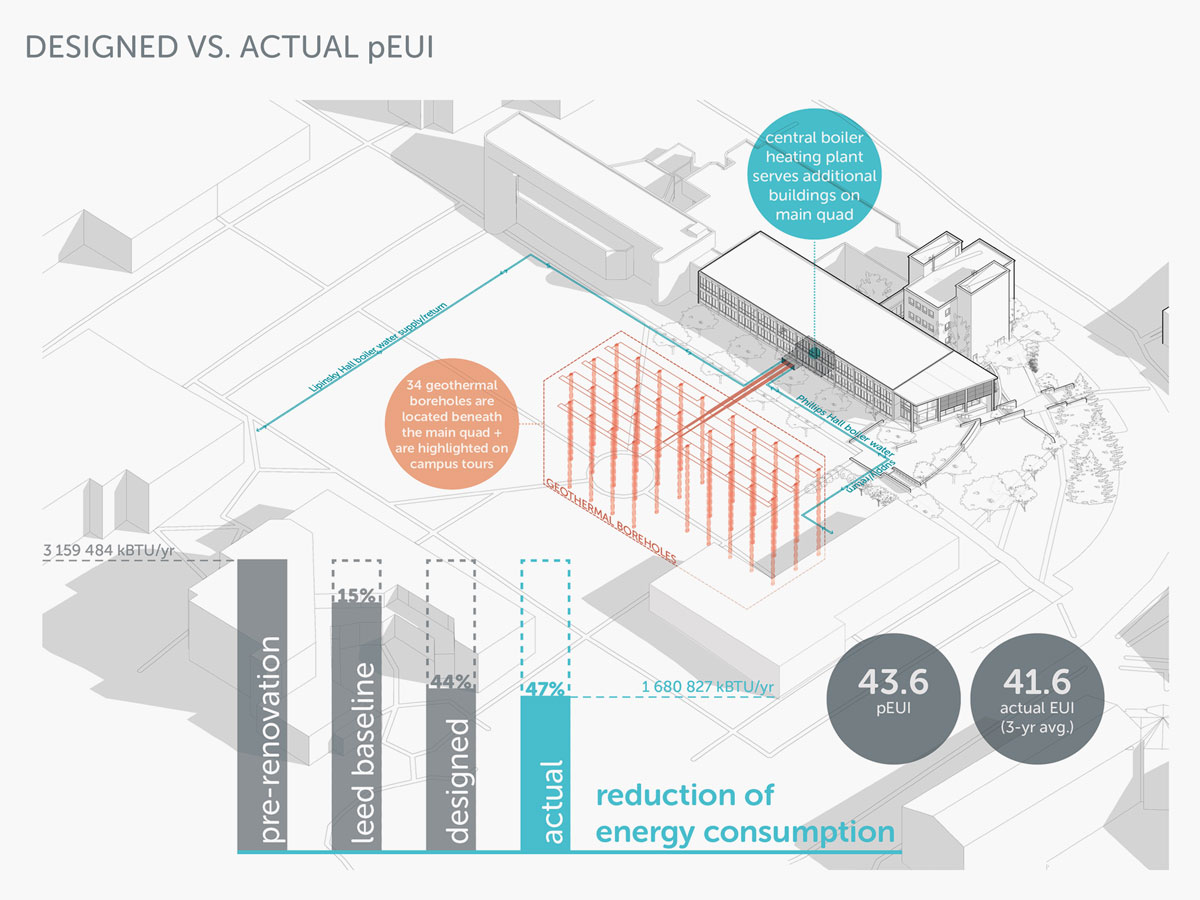A Case Study on the Economic Value of Sustainable Design
 Since the advent of “sustainable design,” designers have argued there is more than an environmental rationale for sustainability – there is a valid economic case for green building design.
Since the advent of “sustainable design,” designers have argued there is more than an environmental rationale for sustainability – there is a valid economic case for green building design.
w
Today, between the data to back it up and the decreasing upfront cost of environmentally-friendly systems and materials, sustainable design is simply in the best interest – business and otherwise – of clients looking to renovate or build new.
w
The renovation of Rhoades Hall, a 1950’s academic building at UNC Asheville, serves as a case study for the economic value of sustainable design – delivering a 46.8% reduction in annual energy consumption and nearly a 25% reduction in energy costs. The LEED Gold certified academic building is home to state-of-the-art classrooms and teaching and research labs. Its renovation prioritized energy efficiency and the inhabitant experience, driving design decisions regarding daylighting, finishes, and systems.
Design dramatically reduces energy consumption and costs
Iterative energy modeling aided the project team in quantifying the ability to reduce mechanical system tonnage based on different glazing types, with the goal to reduce both upfront and lifecycle operating costs.
The first step in reducing energy usage is not using more efficient systems, but reducing the energy loads themselves. For example, the impact of features such as exterior glazing and sunshading on energy use is critical. Our energy modeling exercises revealed that the upfront cost savings in system tonnage more than offset the increased glazing costs in addition to reducing annual energy use and future replacement costs.
By conducting a comparative life cycle cost analysis of different grades of glazing and their impact on the tonnage required for the mechanical system, the design team was able to determine the most cost-effective option for the project. This choice delivered both an immediate cost savings and is saving the owner money over the life of the building.

Reduction in water use exceeds LEED requirement by 42%
When it comes to sustainability, both economics and principles have a role to play. In addition to their interest in reducing operating costs and energy consumption, UNC Asheville values water management and conservation, which made the reduction of water use central to our design process. At Rhoades Hall, a 10,000 gallon cistern captures 100% of the roof area, along with air conditioning condensate, and the water is then treated within the building for non-potable use. This generates enough water to use 72% less water than baseline, which significantly exceeds the LEED certification requirement of 30%. Additionally, the facility uses no potable water for sewage conveyance.
 Renovation is inherently sustainable
Renovation is inherently sustainable
Renovations are inherently sustainable because they preserve an existing building’s embodied energy. These structures not only represent the energy it took to build them, but also the energy to manufacture and transport the materials they’re composed of. Preserving and reusing existing exterior building components, and interior (to the extent possible), makes renovation one of the greenest options in terms of minimizing environmental impact.
Rhoades Hall delivers a tremendous return on investment - it reuses 97% of its existing exterior walls, floors, and roofs, costs less per square foot than comparable new buildings, and reduces energy use by nearly half. By another perspective, this renovation saves enough energy to power another entire classroom building, which translates to meaningful impact for a higher education campus.


David Lancor, AIA, LEED AP BD+C, is an architect and associate principal with Clark Nexsen. He is dedicated to sustainable design and brings a focus on integrated design, creating buildings that work as whole systems. To speak with David, please call 828.232.0608 or email dlancor@clarknexsen.com.